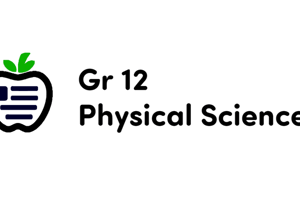Podcast
Questions and Answers
What type of bonds are at the heart of organic chemistry, especially those formed by carbon?
What type of bonds are at the heart of organic chemistry, especially those formed by carbon?
- Covalent bonds (correct)
- Hydrogen bonds
- Polar covalent bonds
- Ionic bonds
Which feature of some cyclic systems in organic chemistry is attributed to the stability conferred by conjugated pi electron clouds?
Which feature of some cyclic systems in organic chemistry is attributed to the stability conferred by conjugated pi electron clouds?
- Hybridization
- Chirality
- Tetrahedral geometry
- Aromaticity (correct)
Which functional group in organic chemistry is represented by the structure -X?
Which functional group in organic chemistry is represented by the structure -X?
- Amines
- Carboxylic acids
- Alkyl halides (correct)
- Alcohols
What type of hybrid orbitals produce quadruple bonds in organic chemistry when occupied by four electrons?
What type of hybrid orbitals produce quadruple bonds in organic chemistry when occupied by four electrons?
Which type of atom is NOT commonly found in functional groups within organic molecules?
Which type of atom is NOT commonly found in functional groups within organic molecules?
What fundamental concept in organic chemistry involves studying how substrates convert into products through molecular interactions?
What fundamental concept in organic chemistry involves studying how substrates convert into products through molecular interactions?
Which type of reaction proceeds via intermediate formation before product release?
Which type of reaction proceeds via intermediate formation before product release?
What determines whether a drug will bind appropriately to its target receptor or protein?
What determines whether a drug will bind appropriately to its target receptor or protein?
Which term refers to molecules sharing identical molecular formulae yet having different spatial orientations of atom connections?
Which term refers to molecules sharing identical molecular formulae yet having different spatial orientations of atom connections?
What essential process in organic chemistry involves electrophile bonding occurring simultaneously with bond cleavage elsewhere in the substrate?
What essential process in organic chemistry involves electrophile bonding occurring simultaneously with bond cleavage elsewhere in the substrate?
Study Notes
Exploring Organic Chemistry's World of Carbon Compounds
Organic chemistry is a captivating branch within the broader field of chemistry that deals with carbon-containing molecules. This realm of scientific discovery encompasses everything from simple compounds like sugars and hydrocarbons to complex ones such as natural products, pharmaceuticals, and polymers. Let's delve into some fascinating aspects of organic chemistry that will transport you into this molecular wonderland.
Molecular Structures and Bonding
At the heart of organic chemistry lies its focus on covalent bonds between atoms—most notably those formed by carbon—to create various structures that define each compound's unique properties. For instance, sp({}^n) hybrid orbitals produce single, double, triple, and even quadruple bonds when occupied by one to four electrons, respectively. Additionally, aromaticity becomes another intriguing feature for certain cyclic systems due to their stability conferred upon them by these conjugated pi electron clouds.
Functional Groups
Functional groups are specific arrangements of atoms and bonds within organic molecules that impart characteristic chemical reactivity patterns. Some common functional groups include alkyl halides (-X), alcohols (-OH), carboxylic acids (-COOH), amines (-NH_x), and carbonyl groups (-C=O). These functional groups, often responsible for chemical reactions occurring at specific sites within molecules, form the basis for understanding how organic molecules interact with one another and undergo transformations.
Reaction Mechanisms
Understanding reaction mechanisms fundamentally involves following steps describing how substrates convert into products through molecular interactions. A few essential processes that occur frequently in organic chemistry include nucleophilic substitution, electrophilic addition, elimination, and oxidation-reduction reactions.
For example, SN2 reactions involve nucleophiles attacking substrate molecules simultaneously with the departure of leaving groups; SN1 reactions proceed via intermediate formation before product release. Similarly, E1cb reactions proceed through a concerted mechanism where electrophile bonding occurs simultaneous with bond cleavage elsewhere in the substrate.
Stereochemistry
Stereoisomers refer to molecules sharing identical molecular formulae yet having different spatial orientations of atom connections. They can exist as enantiomers (non-superimposable mirror images) or diastereomers (non-superimposed non-mirror image pairs). Asymmetric synthesis focuses on generating only desired stereoisomers, which are crucial factors influencing biological activity. In other words, the arrangement of atoms around a chiral center determines whether a drug will bind appropriately to its target receptor or protein.
In conclusion, organic chemistry provides us with a vast playground full of marvelous chemical adventures waiting to unfold. By exploring these concepts in greater detail, we uncover hidden mysteries about life itself while continuing to develop new drugs, materials, and technologies with practical applications beneficial to our daily lives.
Studying That Suits You
Use AI to generate personalized quizzes and flashcards to suit your learning preferences.
Description
Explore the world of carbon compounds in organic chemistry! Dive into molecular structures, functional groups, reaction mechanisms, and stereochemistry to unravel the secrets of this captivating branch of chemistry. Discover how these concepts influence everything from drug development to material science.




